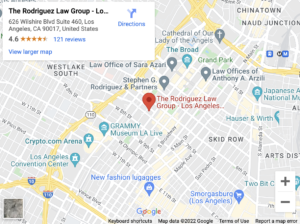Vandals Cause Thousands of Dollars of Damage to Culver City School

Just before school begins in the L.A. Unified School District, one of its schools was damaged by vandalism over the weekend.
Damage to one classroom at a Culver City elementary school is estimated to be at least $30,000. Vandals broke in and caused the damage at Stoner Avenue Elementary School, according to the Los Angeles School Police Department. The school is at 11735 Braddock Drive.
An alarm notified officers of the possible entry to the school. They arrived as several suspects were fleeing from the location. Officers were unable to catch any of the suspects.
The vandals destroyed one classroom. Cabinets in the room were open, and items were thrown around the room. Paint had been thrown against the walls, among other acts of vandalism.
It is not clear whether surveillance video may have captured images of the suspects. Investigators had not released any information about a possible motive for the vandalism. No arrests have been made at this time.
What is Considered Vandalism in California?
California Penal Code §594 defines what the state considers the crime of vandalism. Vandalism involves malicious acts against real or personal property that does not belong to the person committing the acts. A person is guilty of vandalism if he or she:
- Using graffiti or other any other unauthorized marks, words, figures, or designs used to deface property
- Causing damage to another party’s property
- Destroying another party’s property
Vandalism of signs, real property, vehicles, and other property that belongs to a public entity is prohibited. When a person vandalizes public property, it is automatically assumed that the party did not have permission to commit the act in question.
What are Common Examples of Vandalism?
Vandalism covers a wide range of wrongful acts. A person can be charged with vandalism for committing any acts that destroy, damage, or deface another party’s property.
Common examples of vandalism include:
- Mailbox bashing (hitting a mailbox with a bat or other object, which can also lead to a federal offense)
- Teenagers tagging property
- Using paint to draw or write on commercial, private, or public buildings
- Keying another person’s vehicle or slashing the tires
- Throwing rocks or other objects at a building or home
- Carving initials in a bathroom stall, restaurant table, or park bench
- Breaking windows in a storefront
Breaking or damaging property that does not belong to you can lead to a vandalism charge.
What Does the State Need to Prove for a Guilty Verdict?
Being arrested on charges of vandalism is not a guilty verdict. The state must prove all required elements of the crime to obtain a guilty verdict. Failing to prove just one element could result in an acquittal.
The elements that the state must prove for a vandalism charge are:
You Acted Maliciously
Acting maliciously means that you committed the wrongful act with the intent to injure or annoy another party.
You Defaced the Property
Defacing the property includes graffiti and any other marks, words, figures, or other images placed on the property using any materials. Defacing property is not limited to paint.
Lack of Ownership and Lack of Permission
The last element is the lack of ownership and permission. The state must prove that you did not own the property, and you did not have the owner’s permission to deface or damage the property. As in the above situation, it is automatically assumed that you did not have permission if the property is public property.
What Are the Penalties for Vandalism?
The punishment for vandalism depends on the amount of damage caused by your acts. Vandalism that causes under $400 of damage is usually a misdemeanor charge. When the amount of damage is higher, the charge is a felony.
Therefore, if the damages to the classroom at Stoner Avenue Elementary School were $30,000, the charge would be felony vandalism. Felony vandalism applies to damage to property that exceeds $10,000. The potential sentence for felony vandalism is a fine of $50,000 and up to three years in a California state prison.
In all vandalism cases, the perpetrators may also have to pay restitution to the victims and clean up the property and repair the damage caused by the vandalism.
What Should You Do if Arrested for Vandalism in Los Angeles?
Do not talk to the police. Be respectful and do not resist arrest, or you could face other criminal charges. You are only required to provide your name and address.
The more you talk to the police without a lawyer, the more evidence you give the police to use against you. A conviction for vandalism could result in years in prison.
Ask for a criminal defense attorney immediately. Several defenses might apply in your case that could result in a dismissal of charges or a reduced charge.
To learn more, call our Los Angeles criminal defense law firm at 213-995-6767 or visit our contact us page to send us an email.


